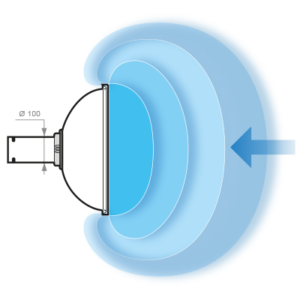After this year of Covid-19 pandemic, it is well known that tiny drops emitted from oral cavities host and lead coronavirus particles (among others). On the other hand, not always has been explained clearly that drops emitted by a cough, a sneeze or while talking are actually of two types: bigger and heavier droplet and lighter and volatile aerosol.
After the initial stages, during which particular attention was paid to droplet, the study of the virus’ trip from a human to another revealed the highly-contagious charge of the second component: the aerosol, which being lighter is spewed out even simply speaking.
Inside the medical aerosol cloud, humidity and warm enable smaller drops to withstand evaporation longer than droplet. This means aerosol remains active in the air for an indefinite lenght of time, which can go from a fraction of a second to several minutes.
It is true that efficiency of contamination depends on coronavirus particles concentration within medical aerosol, but in hospitals doctors, nurses an other preofessionals always work in close contact with contagious patients raising a lot their exposure risk.
Differences in protection from aerosol and droplet
Let’s make clear that personal protective equipment (as masks, faceplates and suits) are suitable to protect us from drops of every dimensions. Main differences between aerosol and droplet are in their viral load and in the persistance of this in time.
Droplet, with its bigger drops, it’s heavier, as a consequence it normally stops within a range of 2 metres from the person who emits it and it tends to fall down until it perches on surfaces, where it remains until the exhaustion of its viral load.
On the contrary, aerosol and its volatile drops form a cloud, which tends to expand in all directions until it meets an obstacle (wall, ceiling, varied surfaces). As a consequence of their lighter weight, tiny drops will take more time to reach a foothold, in the meanwhile they will remain in the air. It is in this time frame that whoever enters in the space in question risks to inhale aerosol particles and to contract the virus.
For these reasons, the only solution to prevent the virus from remaining in air is an extraction straight from the source, that is the emission area around the patient.
AirSafe® devices are based on this principle. The medical line has been designed in response to the pandemic, precisely to help managing contamination in hospitals and other medical environments.

The main difference between this technique and common ambient purification is in the prompt preventive action: ambient purifiers clean air in a room once it is contaminated. AirSafe® medical aerosol extractors prevent contamination of the environment, catching the dangerous emissions straight from the source, to filter it to a HEPA H14 level, before to recycle it in the work environment.
Only in this way we will reduce drastically risk of contamination for healtcare operators, patients and other professionals.
Our technical team is available for further queries: info@medicalairsafe.com
Sources:
https://www.ncbi.nlm.nih.gov/pmc/articles/PMC7293495/
https://abcnews.go.com/Health/aerosol-airborne-droplets-amid-covid-19/story?id=73250018
https://www.repubblica.it/salute/2020/04/07/news/covid_19_il_virus_viaggia_nell_areosol-266681056/

